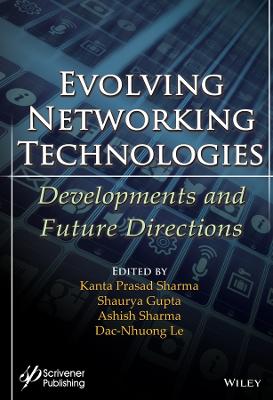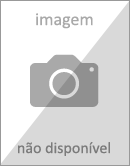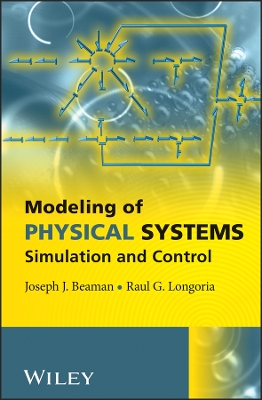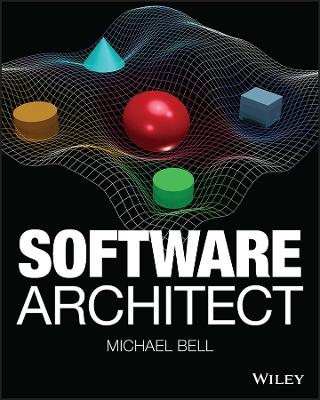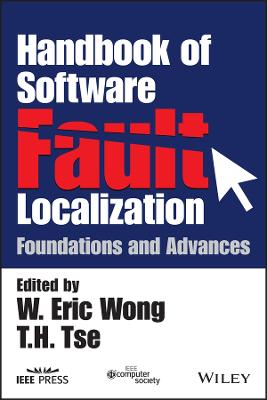Power Electronics, A First Course
 -15%
portes grátis
-15%
portes grátis
Power Electronics, A First Course
Simulations and Laboratory Implementations
Raju, Siddharth; Mohan, Ned
John Wiley & Sons Inc
12/2022
352
Dura
Inglês
9781119818564
15 a 20 dias
742
Descrição não disponível.
List of Simulation and Hardware Implementation Example and Figures xiii
Preface xv
Acknowledgment xvii
About the Companion Website xix
Chapter 1 Power Electronics: An Enabling Technology 1
1.1 Introduction to Power Electronics 1
1.2 Applications and the Role of Power Electronics 2
1.3 Energy and the Environment: Role of Power Electronics in Providing Sustainable Electric Energy 4
1.4 Need for High Efficiency and High Power Density 8
1.5 Structure of Power Electronics Interface 9
1.6 Voltage-Link-Structure 11
1.7 Recent Advances in Solid-State Devices Based on Wide Bandgap (WBG) Materials 16
1.8 Use of Simulation and Hardware Prototyping 16
References 17
Problems 18
Chapter 2 Design of Switching Power-poles 21
2.1 Power Transistors and Power Diodes 21
2.2 Selection of Power Transistors 22
2.3 Selection of Power Diodes 24
2.4 Switching Characteristics and Power Losses in Power Poles 25
2.5 Justifying Switches and Diodes as Ideal 30
2.6 Design Considerations 31
2.7 The PWM IC 34
2.8 Hardware Prototyping 35
References 36
Problems 36
Appendix 2A Diode Reverse Recovery and Power Losses 37
Chapter 3 Switch-mode Dc-dc Converters: Switching Analysis, Topology Selection, and Design 41
3.1 DC-DC Converters 41
3.2 Switching Power-Pole in DC Steady State 41
3.3 Simplifying Assumptions 45
3.4 Common Operating Principles 46
3.5 Buck Converter Switching Analysis in DC Steady State 46
3.6 Boost Converter Switching Analysis in DC Steady State 51
3.7 Buck-Boost Converter Analysis in DC Steady State 57
3.8 Topology Selection 65
3.9 Worst-Case Design 66
3.10 Synchronous-Rectified Buck Converter for Very Low Output Voltages 66
3.11 Interleaving of Converters 71
3.12 Regulation of DC-DC Converters by PWM 71
3.13 Dynamic Average Representation of Converters in CCM 72
3.14 Bi-Directional Switching Power-Pole 74
3.15 Discontinuous-Conduction Mode (DCM) 75
References 86
Problems 86
Appendix 3A Average Representation in Discontinuous- Conduction Mode (DCM) 92
Chapter 4 Designing Feedback Controllers in Switch-mode Dc Power Supplies 97
4.1 Introduction and Objectives of Feedback Control 97
4.2 Review of Linear Control Theory 98
4.3 Linearization of Various Transfer Function Blocks 100
4.4 Feedback Controller Design in Voltage-Mode Control 106
4.5 Peak-Current Mode Control 113
4.6 Feedback Controller Design in DCM 123
References 124
Problems 124
Appendix 4A Bode Plots of Transfer Functions with Poles and Zeros 125
Appendix 4B Transfer Functions in Continuous Conduction Mode (CCM) 128
Appendix 4C Derivation of Parameters of the Controller Transfer Functions 134
Chapter 5 Rectification of Utility Input Using Diode Rectifiers 139
Rectifiers 139
5.1 Introduction 139
5.2 Distortion and Power Factor 140
5.3 Classifying the "Front-End" of Power Electronic Systems 148
Electronic Systems 148
5.4 Diode-Rectifier Bridge "Front-End" 148
5.5 Means to Avoid Transient Inrush Currents at Starting 156
5.6 Front-Ends with Bi-Directional Power Flow 157
References 157
Problems 157
Chapter 6 Power-factor-correction (PFC) Circuits And Designing the Feedback Controller And Designing the Feedback Controller 159
6.1 Introduction 159
6.2 Operating Principle of Single-Phase PFCS 159
6.3 Control of PFCS 162
6.4 Designing the Inner Average-Current-Control Loop 163
6.5 Designing the Outer Voltage-Control Loop 165
6.6 Example of Single-Phase PFC Systems 167
6.7 Simulation Results 168
6.8 Feedforward of the Input Voltage 169
6.9 Other Control Methods for PFCS 169
References 170
Problems 170
Appendix 6A Proof that I?S3/I?L2 =1/2
Appendix 6b Proof That V ?d I i? L(s)=1 I 2 V?s/Vd R I 2/ 1+ s (R /2)C
Chapter 7 Magnetic Circuit Concepts 173
7.1 Ampere-Turns and Flux 173
7.2 Inductance l 174
7.3 Faraday's Law: Induced Voltage in a Coil Due to
Time-Rate of Change of Flux Linkage 176
7.4 Leakage and Magnetizing Inductances 177
7.5 Transformers 179
Reference 182
Problems 182
Chapter 8 Switch-mode Dc Power Supplies 185
8.1 Applications of Switch-Mode DC Power Supplies 185
8.2 Need for Electrical Isolation 186
8.3 Classification of Transformer-Isolated DC-DC Converters 186
8.4 Flyback Converters 186
8.5 Forward Converters 198
8.6 Full-Bridge Converters 204
8.7 Half-Bridge and Push-Pull Converters 209
8.8 Practical Considerations 209
References 210
Problems 211
Chapter 9 Design of High-frequency Inductors and Transformers 215
9.1 Introduction 215
9.2 Basics of Magnetic Design 215
9.3 Inductor and Transformer Construction 216
9.4 Area-Product Method 216
9.5 Design Example of an Inductor 219
9.6 Design Example of a Transformer for a
Forward Converter 221
9.7 Thermal Considerations 221
References 222
Problems 222
Chapter 10 Soft-switching in Dc-dc Converters and
Half-bridge Resonant Converters 223
10.1 Introduction 223
10.2 Hard-Switching in Switching Power poles 223
10.3 Soft-switching in Switching Power-Poles 225
10.4 Half-Bridge Resonant Converter 228
References 230
Problems 230
Chapter 11 Applications of Switch-mode Power Electronics in Motor Drives, Uninterruptible Power Supplies, And Power Systems 231
11.1 Introduction 231
11.2 Electric Motor Drives 231
11.3 Uninterruptible Power Supplies (UPS) 244
11.4 Utility Applications of Switch-Mode
Power Electronics 244
Reference 246
Problems 246
Chapter 12 Synthesis of Dc and Low-frequency Sinusoidal Ac Voltages for Motor Drives, Ups, and Power Systems Applications 249
12.1 Introduction 249
12.2 Bidirectional Switching Power-Pole as the Building Block 250
12.3 Converters for DC Motor Drives (?Vd
12.4 Synthesis of Low-Frequency AC 260
12.5 Single-Phase Inverters 261
12.6 Three-Phase Inverters 266
12.7 Multilevel Inverters 280
12.8 Converters For Bidirectional Power Flow 281
12.9 Matrix Converters (Direct Link System) 283
References 284
Problems 284
Chapter 13 Thyristor Converters 287
13.1 Introduction 287
13.2 Thyristors (SCRs) 287
13.3 Single-phase, Phase-controlled Thyristor Converters 289
13.4 Three-Phase, Full-Bridge Thyristor Converters 294
13.5 Current-Link Systems 300
Reference 301
Problems 301
Chapter 14 Utility Applications of Power Electronics 303
14.1 Introduction 303
14.2 Power Semiconductor Devices and Their Capabilities 304
14.3 Categorizing Power Electronic Systems 305
14.4 Distributed Generation (DG) Applications 306
14.5 Power Electronic Loads 311
14.6 Power Quality Solutions 312
14.7 Transmission and Distribution (T&D) Applications 313
References 317
Problems 317
Index 319
Preface xv
Acknowledgment xvii
About the Companion Website xix
Chapter 1 Power Electronics: An Enabling Technology 1
1.1 Introduction to Power Electronics 1
1.2 Applications and the Role of Power Electronics 2
1.3 Energy and the Environment: Role of Power Electronics in Providing Sustainable Electric Energy 4
1.4 Need for High Efficiency and High Power Density 8
1.5 Structure of Power Electronics Interface 9
1.6 Voltage-Link-Structure 11
1.7 Recent Advances in Solid-State Devices Based on Wide Bandgap (WBG) Materials 16
1.8 Use of Simulation and Hardware Prototyping 16
References 17
Problems 18
Chapter 2 Design of Switching Power-poles 21
2.1 Power Transistors and Power Diodes 21
2.2 Selection of Power Transistors 22
2.3 Selection of Power Diodes 24
2.4 Switching Characteristics and Power Losses in Power Poles 25
2.5 Justifying Switches and Diodes as Ideal 30
2.6 Design Considerations 31
2.7 The PWM IC 34
2.8 Hardware Prototyping 35
References 36
Problems 36
Appendix 2A Diode Reverse Recovery and Power Losses 37
Chapter 3 Switch-mode Dc-dc Converters: Switching Analysis, Topology Selection, and Design 41
3.1 DC-DC Converters 41
3.2 Switching Power-Pole in DC Steady State 41
3.3 Simplifying Assumptions 45
3.4 Common Operating Principles 46
3.5 Buck Converter Switching Analysis in DC Steady State 46
3.6 Boost Converter Switching Analysis in DC Steady State 51
3.7 Buck-Boost Converter Analysis in DC Steady State 57
3.8 Topology Selection 65
3.9 Worst-Case Design 66
3.10 Synchronous-Rectified Buck Converter for Very Low Output Voltages 66
3.11 Interleaving of Converters 71
3.12 Regulation of DC-DC Converters by PWM 71
3.13 Dynamic Average Representation of Converters in CCM 72
3.14 Bi-Directional Switching Power-Pole 74
3.15 Discontinuous-Conduction Mode (DCM) 75
References 86
Problems 86
Appendix 3A Average Representation in Discontinuous- Conduction Mode (DCM) 92
Chapter 4 Designing Feedback Controllers in Switch-mode Dc Power Supplies 97
4.1 Introduction and Objectives of Feedback Control 97
4.2 Review of Linear Control Theory 98
4.3 Linearization of Various Transfer Function Blocks 100
4.4 Feedback Controller Design in Voltage-Mode Control 106
4.5 Peak-Current Mode Control 113
4.6 Feedback Controller Design in DCM 123
References 124
Problems 124
Appendix 4A Bode Plots of Transfer Functions with Poles and Zeros 125
Appendix 4B Transfer Functions in Continuous Conduction Mode (CCM) 128
Appendix 4C Derivation of Parameters of the Controller Transfer Functions 134
Chapter 5 Rectification of Utility Input Using Diode Rectifiers 139
Rectifiers 139
5.1 Introduction 139
5.2 Distortion and Power Factor 140
5.3 Classifying the "Front-End" of Power Electronic Systems 148
Electronic Systems 148
5.4 Diode-Rectifier Bridge "Front-End" 148
5.5 Means to Avoid Transient Inrush Currents at Starting 156
5.6 Front-Ends with Bi-Directional Power Flow 157
References 157
Problems 157
Chapter 6 Power-factor-correction (PFC) Circuits And Designing the Feedback Controller And Designing the Feedback Controller 159
6.1 Introduction 159
6.2 Operating Principle of Single-Phase PFCS 159
6.3 Control of PFCS 162
6.4 Designing the Inner Average-Current-Control Loop 163
6.5 Designing the Outer Voltage-Control Loop 165
6.6 Example of Single-Phase PFC Systems 167
6.7 Simulation Results 168
6.8 Feedforward of the Input Voltage 169
6.9 Other Control Methods for PFCS 169
References 170
Problems 170
Appendix 6A Proof that I?S3/I?L2 =1/2
Appendix 6b Proof That V ?d I i? L(s)=1 I 2 V?s/Vd R I 2/ 1+ s (R /2)C
Chapter 7 Magnetic Circuit Concepts 173
7.1 Ampere-Turns and Flux 173
7.2 Inductance l 174
7.3 Faraday's Law: Induced Voltage in a Coil Due to
Time-Rate of Change of Flux Linkage 176
7.4 Leakage and Magnetizing Inductances 177
7.5 Transformers 179
Reference 182
Problems 182
Chapter 8 Switch-mode Dc Power Supplies 185
8.1 Applications of Switch-Mode DC Power Supplies 185
8.2 Need for Electrical Isolation 186
8.3 Classification of Transformer-Isolated DC-DC Converters 186
8.4 Flyback Converters 186
8.5 Forward Converters 198
8.6 Full-Bridge Converters 204
8.7 Half-Bridge and Push-Pull Converters 209
8.8 Practical Considerations 209
References 210
Problems 211
Chapter 9 Design of High-frequency Inductors and Transformers 215
9.1 Introduction 215
9.2 Basics of Magnetic Design 215
9.3 Inductor and Transformer Construction 216
9.4 Area-Product Method 216
9.5 Design Example of an Inductor 219
9.6 Design Example of a Transformer for a
Forward Converter 221
9.7 Thermal Considerations 221
References 222
Problems 222
Chapter 10 Soft-switching in Dc-dc Converters and
Half-bridge Resonant Converters 223
10.1 Introduction 223
10.2 Hard-Switching in Switching Power poles 223
10.3 Soft-switching in Switching Power-Poles 225
10.4 Half-Bridge Resonant Converter 228
References 230
Problems 230
Chapter 11 Applications of Switch-mode Power Electronics in Motor Drives, Uninterruptible Power Supplies, And Power Systems 231
11.1 Introduction 231
11.2 Electric Motor Drives 231
11.3 Uninterruptible Power Supplies (UPS) 244
11.4 Utility Applications of Switch-Mode
Power Electronics 244
Reference 246
Problems 246
Chapter 12 Synthesis of Dc and Low-frequency Sinusoidal Ac Voltages for Motor Drives, Ups, and Power Systems Applications 249
12.1 Introduction 249
12.2 Bidirectional Switching Power-Pole as the Building Block 250
12.3 Converters for DC Motor Drives (?Vd
12.4 Synthesis of Low-Frequency AC 260
12.5 Single-Phase Inverters 261
12.6 Three-Phase Inverters 266
12.7 Multilevel Inverters 280
12.8 Converters For Bidirectional Power Flow 281
12.9 Matrix Converters (Direct Link System) 283
References 284
Problems 284
Chapter 13 Thyristor Converters 287
13.1 Introduction 287
13.2 Thyristors (SCRs) 287
13.3 Single-phase, Phase-controlled Thyristor Converters 289
13.4 Three-Phase, Full-Bridge Thyristor Converters 294
13.5 Current-Link Systems 300
Reference 301
Problems 301
Chapter 14 Utility Applications of Power Electronics 303
14.1 Introduction 303
14.2 Power Semiconductor Devices and Their Capabilities 304
14.3 Categorizing Power Electronic Systems 305
14.4 Distributed Generation (DG) Applications 306
14.5 Power Electronic Loads 311
14.6 Power Quality Solutions 312
14.7 Transmission and Distribution (T&D) Applications 313
References 317
Problems 317
Index 319
Este título pertence ao(s) assunto(s) indicados(s). Para ver outros títulos clique no assunto desejado.
Power electronics; circuit simulation; power electronics laboratory; buck/boost/buck-boost converter; switched mode dc-dc; flyback and forward converter; real-time control; high frequency transformers; power-factor-correction; PFC; power electronics textbook
List of Simulation and Hardware Implementation Example and Figures xiii
Preface xv
Acknowledgment xvii
About the Companion Website xix
Chapter 1 Power Electronics: An Enabling Technology 1
1.1 Introduction to Power Electronics 1
1.2 Applications and the Role of Power Electronics 2
1.3 Energy and the Environment: Role of Power Electronics in Providing Sustainable Electric Energy 4
1.4 Need for High Efficiency and High Power Density 8
1.5 Structure of Power Electronics Interface 9
1.6 Voltage-Link-Structure 11
1.7 Recent Advances in Solid-State Devices Based on Wide Bandgap (WBG) Materials 16
1.8 Use of Simulation and Hardware Prototyping 16
References 17
Problems 18
Chapter 2 Design of Switching Power-poles 21
2.1 Power Transistors and Power Diodes 21
2.2 Selection of Power Transistors 22
2.3 Selection of Power Diodes 24
2.4 Switching Characteristics and Power Losses in Power Poles 25
2.5 Justifying Switches and Diodes as Ideal 30
2.6 Design Considerations 31
2.7 The PWM IC 34
2.8 Hardware Prototyping 35
References 36
Problems 36
Appendix 2A Diode Reverse Recovery and Power Losses 37
Chapter 3 Switch-mode Dc-dc Converters: Switching Analysis, Topology Selection, and Design 41
3.1 DC-DC Converters 41
3.2 Switching Power-Pole in DC Steady State 41
3.3 Simplifying Assumptions 45
3.4 Common Operating Principles 46
3.5 Buck Converter Switching Analysis in DC Steady State 46
3.6 Boost Converter Switching Analysis in DC Steady State 51
3.7 Buck-Boost Converter Analysis in DC Steady State 57
3.8 Topology Selection 65
3.9 Worst-Case Design 66
3.10 Synchronous-Rectified Buck Converter for Very Low Output Voltages 66
3.11 Interleaving of Converters 71
3.12 Regulation of DC-DC Converters by PWM 71
3.13 Dynamic Average Representation of Converters in CCM 72
3.14 Bi-Directional Switching Power-Pole 74
3.15 Discontinuous-Conduction Mode (DCM) 75
References 86
Problems 86
Appendix 3A Average Representation in Discontinuous- Conduction Mode (DCM) 92
Chapter 4 Designing Feedback Controllers in Switch-mode Dc Power Supplies 97
4.1 Introduction and Objectives of Feedback Control 97
4.2 Review of Linear Control Theory 98
4.3 Linearization of Various Transfer Function Blocks 100
4.4 Feedback Controller Design in Voltage-Mode Control 106
4.5 Peak-Current Mode Control 113
4.6 Feedback Controller Design in DCM 123
References 124
Problems 124
Appendix 4A Bode Plots of Transfer Functions with Poles and Zeros 125
Appendix 4B Transfer Functions in Continuous Conduction Mode (CCM) 128
Appendix 4C Derivation of Parameters of the Controller Transfer Functions 134
Chapter 5 Rectification of Utility Input Using Diode Rectifiers 139
Rectifiers 139
5.1 Introduction 139
5.2 Distortion and Power Factor 140
5.3 Classifying the "Front-End" of Power Electronic Systems 148
Electronic Systems 148
5.4 Diode-Rectifier Bridge "Front-End" 148
5.5 Means to Avoid Transient Inrush Currents at Starting 156
5.6 Front-Ends with Bi-Directional Power Flow 157
References 157
Problems 157
Chapter 6 Power-factor-correction (PFC) Circuits And Designing the Feedback Controller And Designing the Feedback Controller 159
6.1 Introduction 159
6.2 Operating Principle of Single-Phase PFCS 159
6.3 Control of PFCS 162
6.4 Designing the Inner Average-Current-Control Loop 163
6.5 Designing the Outer Voltage-Control Loop 165
6.6 Example of Single-Phase PFC Systems 167
6.7 Simulation Results 168
6.8 Feedforward of the Input Voltage 169
6.9 Other Control Methods for PFCS 169
References 170
Problems 170
Appendix 6A Proof that I?S3/I?L2 =1/2
Appendix 6b Proof That V ?d I i? L(s)=1 I 2 V?s/Vd R I 2/ 1+ s (R /2)C
Chapter 7 Magnetic Circuit Concepts 173
7.1 Ampere-Turns and Flux 173
7.2 Inductance l 174
7.3 Faraday's Law: Induced Voltage in a Coil Due to
Time-Rate of Change of Flux Linkage 176
7.4 Leakage and Magnetizing Inductances 177
7.5 Transformers 179
Reference 182
Problems 182
Chapter 8 Switch-mode Dc Power Supplies 185
8.1 Applications of Switch-Mode DC Power Supplies 185
8.2 Need for Electrical Isolation 186
8.3 Classification of Transformer-Isolated DC-DC Converters 186
8.4 Flyback Converters 186
8.5 Forward Converters 198
8.6 Full-Bridge Converters 204
8.7 Half-Bridge and Push-Pull Converters 209
8.8 Practical Considerations 209
References 210
Problems 211
Chapter 9 Design of High-frequency Inductors and Transformers 215
9.1 Introduction 215
9.2 Basics of Magnetic Design 215
9.3 Inductor and Transformer Construction 216
9.4 Area-Product Method 216
9.5 Design Example of an Inductor 219
9.6 Design Example of a Transformer for a
Forward Converter 221
9.7 Thermal Considerations 221
References 222
Problems 222
Chapter 10 Soft-switching in Dc-dc Converters and
Half-bridge Resonant Converters 223
10.1 Introduction 223
10.2 Hard-Switching in Switching Power poles 223
10.3 Soft-switching in Switching Power-Poles 225
10.4 Half-Bridge Resonant Converter 228
References 230
Problems 230
Chapter 11 Applications of Switch-mode Power Electronics in Motor Drives, Uninterruptible Power Supplies, And Power Systems 231
11.1 Introduction 231
11.2 Electric Motor Drives 231
11.3 Uninterruptible Power Supplies (UPS) 244
11.4 Utility Applications of Switch-Mode
Power Electronics 244
Reference 246
Problems 246
Chapter 12 Synthesis of Dc and Low-frequency Sinusoidal Ac Voltages for Motor Drives, Ups, and Power Systems Applications 249
12.1 Introduction 249
12.2 Bidirectional Switching Power-Pole as the Building Block 250
12.3 Converters for DC Motor Drives (?Vd
12.4 Synthesis of Low-Frequency AC 260
12.5 Single-Phase Inverters 261
12.6 Three-Phase Inverters 266
12.7 Multilevel Inverters 280
12.8 Converters For Bidirectional Power Flow 281
12.9 Matrix Converters (Direct Link System) 283
References 284
Problems 284
Chapter 13 Thyristor Converters 287
13.1 Introduction 287
13.2 Thyristors (SCRs) 287
13.3 Single-phase, Phase-controlled Thyristor Converters 289
13.4 Three-Phase, Full-Bridge Thyristor Converters 294
13.5 Current-Link Systems 300
Reference 301
Problems 301
Chapter 14 Utility Applications of Power Electronics 303
14.1 Introduction 303
14.2 Power Semiconductor Devices and Their Capabilities 304
14.3 Categorizing Power Electronic Systems 305
14.4 Distributed Generation (DG) Applications 306
14.5 Power Electronic Loads 311
14.6 Power Quality Solutions 312
14.7 Transmission and Distribution (T&D) Applications 313
References 317
Problems 317
Index 319
Preface xv
Acknowledgment xvii
About the Companion Website xix
Chapter 1 Power Electronics: An Enabling Technology 1
1.1 Introduction to Power Electronics 1
1.2 Applications and the Role of Power Electronics 2
1.3 Energy and the Environment: Role of Power Electronics in Providing Sustainable Electric Energy 4
1.4 Need for High Efficiency and High Power Density 8
1.5 Structure of Power Electronics Interface 9
1.6 Voltage-Link-Structure 11
1.7 Recent Advances in Solid-State Devices Based on Wide Bandgap (WBG) Materials 16
1.8 Use of Simulation and Hardware Prototyping 16
References 17
Problems 18
Chapter 2 Design of Switching Power-poles 21
2.1 Power Transistors and Power Diodes 21
2.2 Selection of Power Transistors 22
2.3 Selection of Power Diodes 24
2.4 Switching Characteristics and Power Losses in Power Poles 25
2.5 Justifying Switches and Diodes as Ideal 30
2.6 Design Considerations 31
2.7 The PWM IC 34
2.8 Hardware Prototyping 35
References 36
Problems 36
Appendix 2A Diode Reverse Recovery and Power Losses 37
Chapter 3 Switch-mode Dc-dc Converters: Switching Analysis, Topology Selection, and Design 41
3.1 DC-DC Converters 41
3.2 Switching Power-Pole in DC Steady State 41
3.3 Simplifying Assumptions 45
3.4 Common Operating Principles 46
3.5 Buck Converter Switching Analysis in DC Steady State 46
3.6 Boost Converter Switching Analysis in DC Steady State 51
3.7 Buck-Boost Converter Analysis in DC Steady State 57
3.8 Topology Selection 65
3.9 Worst-Case Design 66
3.10 Synchronous-Rectified Buck Converter for Very Low Output Voltages 66
3.11 Interleaving of Converters 71
3.12 Regulation of DC-DC Converters by PWM 71
3.13 Dynamic Average Representation of Converters in CCM 72
3.14 Bi-Directional Switching Power-Pole 74
3.15 Discontinuous-Conduction Mode (DCM) 75
References 86
Problems 86
Appendix 3A Average Representation in Discontinuous- Conduction Mode (DCM) 92
Chapter 4 Designing Feedback Controllers in Switch-mode Dc Power Supplies 97
4.1 Introduction and Objectives of Feedback Control 97
4.2 Review of Linear Control Theory 98
4.3 Linearization of Various Transfer Function Blocks 100
4.4 Feedback Controller Design in Voltage-Mode Control 106
4.5 Peak-Current Mode Control 113
4.6 Feedback Controller Design in DCM 123
References 124
Problems 124
Appendix 4A Bode Plots of Transfer Functions with Poles and Zeros 125
Appendix 4B Transfer Functions in Continuous Conduction Mode (CCM) 128
Appendix 4C Derivation of Parameters of the Controller Transfer Functions 134
Chapter 5 Rectification of Utility Input Using Diode Rectifiers 139
Rectifiers 139
5.1 Introduction 139
5.2 Distortion and Power Factor 140
5.3 Classifying the "Front-End" of Power Electronic Systems 148
Electronic Systems 148
5.4 Diode-Rectifier Bridge "Front-End" 148
5.5 Means to Avoid Transient Inrush Currents at Starting 156
5.6 Front-Ends with Bi-Directional Power Flow 157
References 157
Problems 157
Chapter 6 Power-factor-correction (PFC) Circuits And Designing the Feedback Controller And Designing the Feedback Controller 159
6.1 Introduction 159
6.2 Operating Principle of Single-Phase PFCS 159
6.3 Control of PFCS 162
6.4 Designing the Inner Average-Current-Control Loop 163
6.5 Designing the Outer Voltage-Control Loop 165
6.6 Example of Single-Phase PFC Systems 167
6.7 Simulation Results 168
6.8 Feedforward of the Input Voltage 169
6.9 Other Control Methods for PFCS 169
References 170
Problems 170
Appendix 6A Proof that I?S3/I?L2 =1/2
Appendix 6b Proof That V ?d I i? L(s)=1 I 2 V?s/Vd R I 2/ 1+ s (R /2)C
Chapter 7 Magnetic Circuit Concepts 173
7.1 Ampere-Turns and Flux 173
7.2 Inductance l 174
7.3 Faraday's Law: Induced Voltage in a Coil Due to
Time-Rate of Change of Flux Linkage 176
7.4 Leakage and Magnetizing Inductances 177
7.5 Transformers 179
Reference 182
Problems 182
Chapter 8 Switch-mode Dc Power Supplies 185
8.1 Applications of Switch-Mode DC Power Supplies 185
8.2 Need for Electrical Isolation 186
8.3 Classification of Transformer-Isolated DC-DC Converters 186
8.4 Flyback Converters 186
8.5 Forward Converters 198
8.6 Full-Bridge Converters 204
8.7 Half-Bridge and Push-Pull Converters 209
8.8 Practical Considerations 209
References 210
Problems 211
Chapter 9 Design of High-frequency Inductors and Transformers 215
9.1 Introduction 215
9.2 Basics of Magnetic Design 215
9.3 Inductor and Transformer Construction 216
9.4 Area-Product Method 216
9.5 Design Example of an Inductor 219
9.6 Design Example of a Transformer for a
Forward Converter 221
9.7 Thermal Considerations 221
References 222
Problems 222
Chapter 10 Soft-switching in Dc-dc Converters and
Half-bridge Resonant Converters 223
10.1 Introduction 223
10.2 Hard-Switching in Switching Power poles 223
10.3 Soft-switching in Switching Power-Poles 225
10.4 Half-Bridge Resonant Converter 228
References 230
Problems 230
Chapter 11 Applications of Switch-mode Power Electronics in Motor Drives, Uninterruptible Power Supplies, And Power Systems 231
11.1 Introduction 231
11.2 Electric Motor Drives 231
11.3 Uninterruptible Power Supplies (UPS) 244
11.4 Utility Applications of Switch-Mode
Power Electronics 244
Reference 246
Problems 246
Chapter 12 Synthesis of Dc and Low-frequency Sinusoidal Ac Voltages for Motor Drives, Ups, and Power Systems Applications 249
12.1 Introduction 249
12.2 Bidirectional Switching Power-Pole as the Building Block 250
12.3 Converters for DC Motor Drives (?Vd
12.4 Synthesis of Low-Frequency AC 260
12.5 Single-Phase Inverters 261
12.6 Three-Phase Inverters 266
12.7 Multilevel Inverters 280
12.8 Converters For Bidirectional Power Flow 281
12.9 Matrix Converters (Direct Link System) 283
References 284
Problems 284
Chapter 13 Thyristor Converters 287
13.1 Introduction 287
13.2 Thyristors (SCRs) 287
13.3 Single-phase, Phase-controlled Thyristor Converters 289
13.4 Three-Phase, Full-Bridge Thyristor Converters 294
13.5 Current-Link Systems 300
Reference 301
Problems 301
Chapter 14 Utility Applications of Power Electronics 303
14.1 Introduction 303
14.2 Power Semiconductor Devices and Their Capabilities 304
14.3 Categorizing Power Electronic Systems 305
14.4 Distributed Generation (DG) Applications 306
14.5 Power Electronic Loads 311
14.6 Power Quality Solutions 312
14.7 Transmission and Distribution (T&D) Applications 313
References 317
Problems 317
Index 319
Este título pertence ao(s) assunto(s) indicados(s). Para ver outros títulos clique no assunto desejado.

